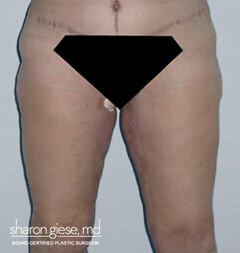THIGH LIFT SURGERY

Dr. Amar Singh, MD
Dr. Amar Singh is a plastic surgeon with more than 20 years dedicated to cosmetic procedures and extensive academic knowledge from his fellowships in Oculo-Facial Plastic Surgery, Cosmetic Facial Plastic Surgery, and Liposuction surgery. Dr. Singh's commitment to academia sets him apart, as he has seamlessly integrated teaching residents and fellows into his practice, staying at the forefront of the latest developments in the field. Proficient in a comprehensive range of dermal fillers and neuromodulators, Dr. Singh's skill extends to various lasers, including CO2 for resurfacing and surgical cutting.
Dr. Qazi, MD, Board-Certified Surgeon
Dr. Sadaf Qazi is a cosmetic surgeon with expertise in facial and body procedures, including treatments with toxins and fillers, and anti-aging treatments such as Sculptra and Radiesse. Additionally, Dr. Qazi specializes in buttocks anti-aging procedures. Proficient in administering fillers, neurotoxins, and biostimulators, Dr. Qazi also specalizes in tummy tuck, breast augmentation, fat transfer (BBL), and blepharoplasty & liposuction.

WHY STUDIOMD
We have been leader in the field of cosmetic laser and medicine since 2008
And in those 14+ years, we have performed more than 100,000 treatments on all skin types with your safety as our top concern.
We are conveniently located in NY, NJ, and CT; currently with 9 locations and counting.
Easy Peasy!
Submit Form Below or Click to Book Online or Call (212) 219-1990
FREQUENTLY ASKED QUESTIONS
● Inner or medial thigh lift: It is the most common approach in which the surgeon will remove the sagging skin in your inner thighs with an incision from your groin down toward your knee or the back of your thigh area.
● Mini thigh lift:This technique requires fewer incisions than the traditional thigh lift and works well if you want to focus mainly on the upper inner part of your thigh. It usually involves a single incision in your groin area.
● Outer or bilateral thigh lift: As its name states, this type of thigh lift addresses the outside portions of your thighs. It involves an incision that starts from the groin area and is extended outward to your hip and lumbar region.
● Vertical thigh lift: This type of thigh lift is recommended if you have excess skin all-around your thighs. Since it is a far-reaching technique, it’ll require larger incisions that extend down to your knees.
● Lift with liposuction: If you have poor skin elasticity in your thighs, your surgeon may recommend having liposuction combined with thigh lift surgery, to take out excess fat tissue and prevent future sagging skin.
Your surgeon will attempt to place the scar as hidden as possible, in a way that you’ll likely be able to conceal it under bathing suit hemlines and underwear. The technique of groin incision placement is often the better option since the scar naturally hides in the crease of the thigh. But if you have more significant loose skin along your upper legs, your surgeon may require a different kind of incision down the inside of the thigh that will be seen when your bare legs are crossed.
LOCATIONS & DIRECTIONS







